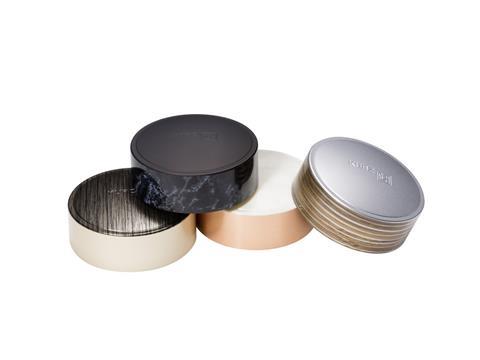
Leonhard Kurz has developed an environmentally-friendly finishing process for sealing caps made from plastic.
The process called CAP-tivate Luxury, which was developed for the cosmetics industry, enables a wide variety of surface designs to be transferred in a dry, emission-free and energy-saving manner. This capability also extends to metallic and chrome designs, which can be achieved without electroplating. The recyclability of the plastic parts is retained when using a CAP-tivate Luxury coating. The coating is generally free of poisonous raw materials, and its composition can also be tailored to the environmental requirements of the customer.
The environmental friendliness of the decoration can be reflected in the visual look of the plastic lid. The cosmetics manufacturer can choose between a wide variety of nature-oriented designs with a natural appearance that is particularly well suited to natural cosmetics items. In addition to simulating the natural beauty of wood or stone, the process can also be used to create specific tactile sensations. The designs can be combined with partial soft-touch surfaces that appeal to the tactile senses and convey the product characteristics. In general, it is possible to combine different designs. For example, the top of the lid could exhibit subtle marble structures while the side surfaces glimmer in elegant metallic tones.
The coatings used in the CAP-tivate Luxury process fulfill the requirements of several national and international regulations, for example EU Packaging Directive 94/62/EC and CONEG (Coalition of Northeastern Governors). Furthermore, Kurz's environmental management system fulfills the stringent requirements of ISO 14001, to which almost all locations of the company are certified. In addition to this, Kurz follows strict internal environmental guidelines that exceed the statutory requirements when manufacturing its coatings. With a view to acting and conducting its business in a sustainable manner, the company has succeeded in generating the energy requirements for its manufacturing plants largely through heat recovery from its air treatment facilities. With these facilities, it is able to achieve emission values up to 85 percent below the statutory requirements.
More info:




















